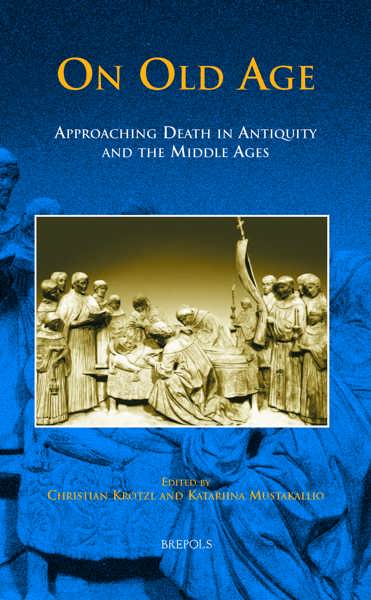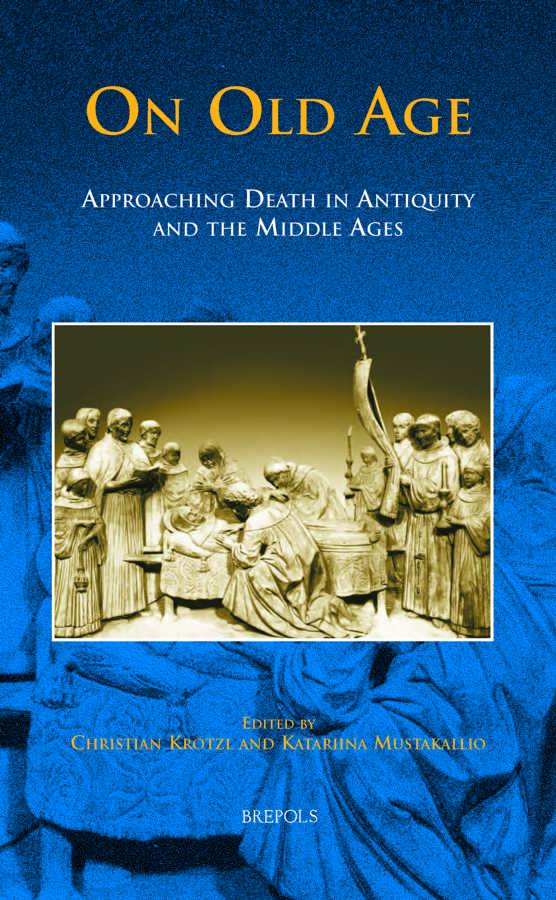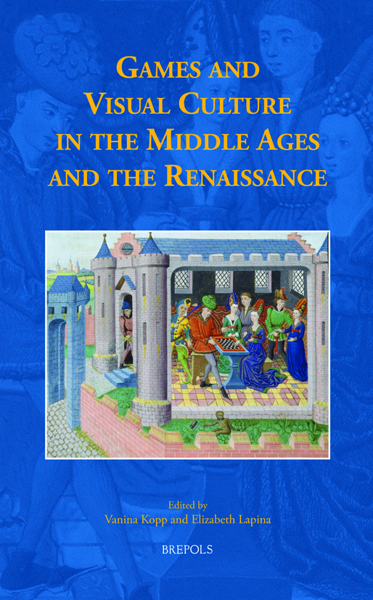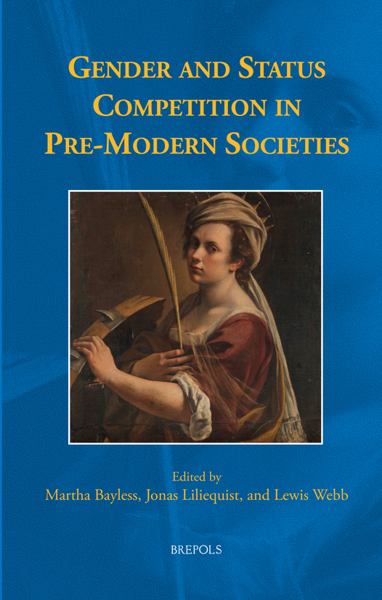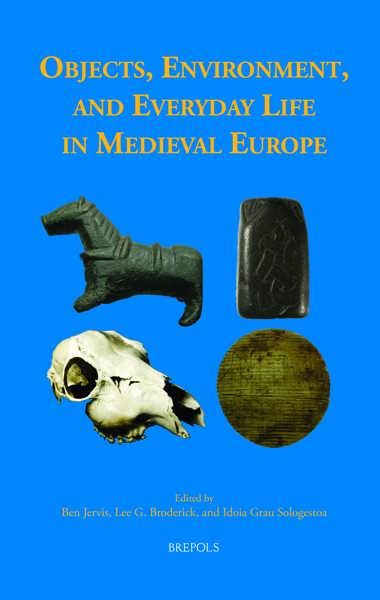
On Old Age
Approaching Death in Antiquity and the Middle Ages
Christian Krötzl, Katariina Mustakallio (eds)
- Pages: 345 p.
- Size:156 x 234 mm
- Illustrations:22 b/w, 5 tables b/w.
- Language(s):English
- Publication Year:2012
- € 95,00 EXCL. VAT RETAIL PRICE
- ISBN: 978-2-503-53216-5
- Hardback
- Available
- € 95,00 EXCL. VAT RETAIL PRICE
- ISBN: 978-2-503-53983-6
- E-book
- Available
This volume of collected essays combines a longue duree viewpoint with an interdisciplinary approach to explore attitudes towards aging, old age, and death from Classical Antiquity to the Middle Ages.
"In conclusion, the editors and contributing authors are to be commended on a bold and ambitious comparative study that seeks to bring together into a new conceptual framework two topics and two epochs typically treated separately. There is no question that researchers will find much of value in the individual chapters. Indeed, we must continue to develop and support such boundary-crossing studies." (Erin J. Campbell, in: Bryn Mawr Classical Review, 2012.11.07)
"This is a solid, useful book which contributes to a growing field of study on conceptions of aging and death in the past." (Patricia Baker, in: Medieval Archaeology, Vol. 57, December 2013, p. 378-379)
"(...) einen durchgehend lesenswerten und uneingeschränkt zu empfehlenden Sammelband, der nicht nur die spezifischen Kerngebiete der einzelnen Beiträge fachlich bereichert, sondern durch die Zusammenschau der verschiedensten Aspekte einen breiten Einblick in die Thematiken Alter, Sterben und Tod sowie Totengedächtnis in der klassischen Antike und dem europäischen Mittelalter vermittelt." (Marcus Sigismund, in: Latomus, fasc. 2014, 4, tome 73, p. 1116-1119)
Recent research into old age and dying in the premodern world has examined not only the demographic aspects of ageing populations but also the social role of aged people. Nonetheless, there has usually been a neglect of the end of life and attitudes towards death and memory. These topics have seldom been discussed in the same volume. The end of life evokes questions. What does it mean to grow old? What happens when one dies? How does one cope with old age and death? These questions were as relevant for individuals and societies in earlier periods as they are in the present. The aim of this collection of articles is to cross the boundaries that have traditionally isolated different time periods and scholarly disciplines from each other. The volume focuses on aging, old age, and death from Classical Antiquity to the Middle Ages. The purpose of this book is to approach these themes from an interdisciplinary point of view in the longue durée. Instead of concentrating solely on demographic issues it takes a much broader view, considering attitudes towards ageing, dying, death, and memory. The volume, with its diverse topics, cuts across traditional scholarly barriers and will provide valuable analytical tools for further studies on the subject.
Preface
List of Illustrations
Part I: Coping with Old Age and Death: Views and Values
Viewing the Old: Recording and Respecting the Elderly at Rome and in the Empire
MARY HARLOW AND RAY LAURENCE
The Elderly Children of Greece and Rome
TIM PARKIN
Representing Older Women: Hersilia, Veturia, VirgoVestalis Maxima
KATARIINA MUSTAKALLIO
The Changing Face of Death: The Iconography of the Personification of Death in the Early Middle Ages
JILL BRADLEY
‘I wish my body to hallowed ground’: Testamentary Orders of the Burghers of Late Medieval Pressburg about their Own Burial
JUDIT MAJOROSSY
Part II: Social Meaning of Old Age and Death
Old Age as a Principle of Social Organization: Gerousiai in the Poleis of Hellenistic and Roman Southern Asia Minor
ENNIO BAUER
The Massacre of Old Men by the Gauls in 390 BC and the Social Meaning of Old Age in Early Rome
ALEKSANDR KOPTEV
What Happened to Aged Priests in the Late Middle Ages?
KIRSI SALONEN
Coping with Old Age in Medieval Hungarian Towns
KATALIN SZENDE
Burials and Politics of the Living and the Dead in Scotland and Pomerania in the High Middle Ages: The Case of Two Cistercian Monasteries
EMILIA JAMROZIAK
Part III: Coping with Death: Remembrance and Oblivion
No Place for the Dead: Ludi Saeculares of 17 BC and the Purificationary Cults of May as Part of the Roman Ritual Year
JUSSI RANTALA
Disease, Death, Destiny: The Healer as Soter in Miraculous Cures
ILDIKÓ CSEPREGI
Medical Perspectives on Death in Late Medieval and Early Modern Europe
IONA MCCLEERY
Who Deserves the Crown of Martyrdom? Martyrs in the Crusade Ideology of Jacques de Vitry (1160/70–1240)
MIIKKA TAMMINEN
Rituals and Reputation: Immature Death in the Fourteenth-Century Canonization Processes
SARI KATAJALA-PELTOMAA
Pulpits and Tombs in Renaissance Florence
NIRIT BEN-ARYEH DEBBY
